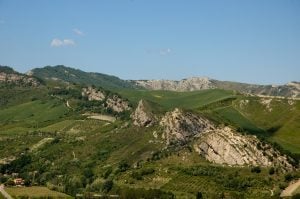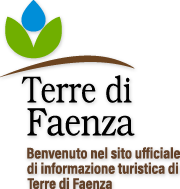Regional Park of Romagna Gypsum Vein
Regional Park of Romagna Gypsum Vein, a regional park since 2005, is a karst complex that rises as a natural wall, full of caves and tunnels. Stretching 15km long, 2km wide and cutting across the three valleys of the Santerno, Senio and Lamone rivers, this Regional Park forms the largest chain of selenitic gypsum in Europe.
Clear Gypsum
In the area of Regional Park of Romagna Gypsum Vein, we find Selenite, a variety of gypsum that is formed by deposits of translucent scales. This characteristic of transparency understood in ancient times and used to make windows (the recent discovery of Roman caves in the park that were used for the extraction of Lapis Specularis has provided more evidence for this theory.) Selenite is also known as ‘moonstone’ for the reflective properties it exhibits when light is shone on it.
Landscape
From the southern slope, Romagna Gypsum Vein appears as an almost vertical wall of white gypsum striped with layers of softer gray marl. On the steep slopes to the south, the vegetation is mostly Mediterranean, while the northern slopes are filled with chestnuts trees and spectacular spring blossoms. The solubility of the gypsum has meant, over many millennia, that water has carved out caves, sinkholes, and gullies that typify the landscape of this stretch of the Romagna Apennines.
Two are the Visitors Centres of the Park: La Casa del Fiume in Borgo Tossignano and Ca’ Carnè in Brisighella.
There are trails open to biking and hiking throughout the park.







